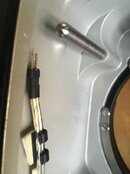Hi folks-
I decided to buy my first DSLR housing used. The guy that sold them to me has so far been helpful, but is currently somewhere without wifi.
So I'm trying to figure out my issue with the Subal for the 7D Mark I. Yes, I've contacted Subal, and though they've been polite, they've also told me that the one person who can help me is on vacation --you guessed it-- without wifi.
Basically, I feel like I'm missing something when it comes to putting the ports on, because mine aren't locking into place... and in one case, is falling straight off the housing. I did a pool test with the dome port without any camera in the housing. The tissues in the front port area got wet. The flat port? Oh that just plain fell off.
It's way easier for me to just show you rather than explain it. Can someone spot whatever it is that I'm doing incorrectly?
I decided to buy my first DSLR housing used. The guy that sold them to me has so far been helpful, but is currently somewhere without wifi.
So I'm trying to figure out my issue with the Subal for the 7D Mark I. Yes, I've contacted Subal, and though they've been polite, they've also told me that the one person who can help me is on vacation --you guessed it-- without wifi.
Basically, I feel like I'm missing something when it comes to putting the ports on, because mine aren't locking into place... and in one case, is falling straight off the housing. I did a pool test with the dome port without any camera in the housing. The tissues in the front port area got wet. The flat port? Oh that just plain fell off.
It's way easier for me to just show you rather than explain it. Can someone spot whatever it is that I'm doing incorrectly?




